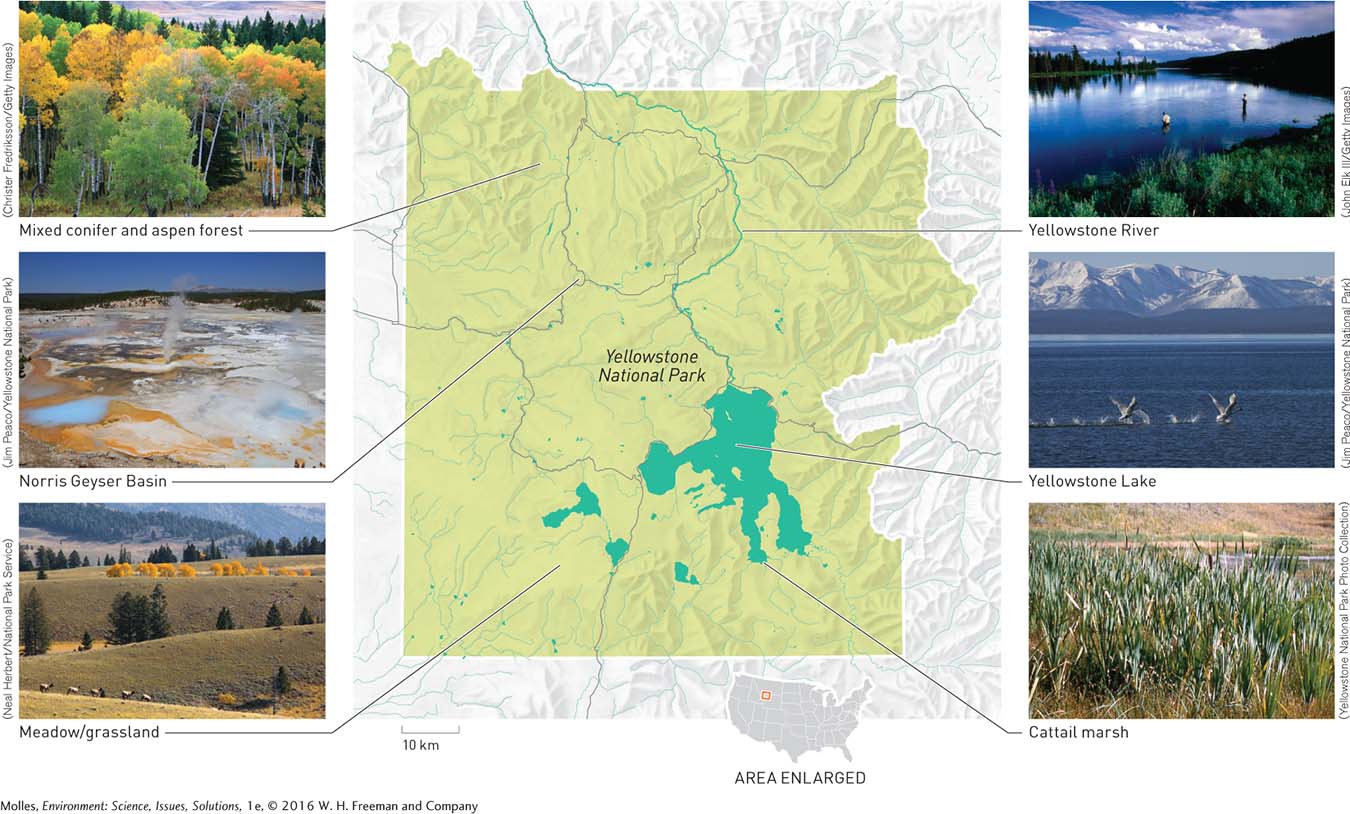4.1 Species and ecosystem diversity are key elements of biodiversity
96
4.1–


Why does pollution often reduce species richness and evenness in terrestrial and aquatic ecosystems?
Biologists have described and named more than 1.75 million species of organisms, but the true number of species on Earth likely ranges between 3 and 100 million. In fact, we do not even know the full diversity of any single ecosystem on the planet. Nevertheless, biologists have developed tools to help us understand and study diversity and its importance to ecosystem functioning.
species diversity A measure of diversity that combines the number of species in a community and their relative abundances.
species richness The number of species in a community or living in a local area or region; higher species richness increases species diversity.
species evenness How evenly individuals are apportioned among the species inhabiting a community; higher evenness increases species diversity.
When you think about biodiversity, you probably imagine a lush, green tropical rain forest like Madidi National Park in Bolivia, which has more than 600 tree species. By comparison, an oak-
Consider butterflies living in three hypothetical meadow ecosystems (Figure 4.1). With six butterfly species, ecosystem (b) clearly supports a higher diversity of butterflies compared with ecosystem (a), which supports only a single species of butterfly.

In contrast, ecosystems (b) and (c) both have six butterfly species. Still, the butterflies in ecosystem (c) give a visual impression of higher butterfly species diversity. The visual contrast between ecosystems (b) and (c) is created by higher species evenness in (c). In other words, butterfly species diversity is higher in ecosystem (c), as a consequence of higher species evenness.
Diversity has consequences for the functioning of ecosystems. More diverse communities are usually more stable over time and recover more quickly after disturbances, such as a treefall or a forest fire. In addition, ecosystems with higher species richness generally support higher levels of primary production, compared with less diverse ecosystems (see Chapter 7, page 190).
Ecosystem Diversity
ecosystem diversity A measure of the variety and extent of ecosystems in an area.
Zooming out from the species level, we see that the landscape is a patchwork of different ecosystems ranging from forests to wetlands. Ecosystem diversity is a measure of the variety and extent of ecosystems in an area. Because of differences in the kinds of species in different ecosystems and differences in their patterns of energy flow and nutrient cycling, each ecosystem in a landscape adds to overall biodiversity. For instance, the butterflies pictured in Figure 4.1 live in meadow ecosystems.
A nearby woodland ecosystem would support a different assemblage of butterfly species, and an agricultural field would likely support yet another collection of butterflies. Furthermore, the butterflies that live in these three different ecosystems would be pollinating different plants, which, in turn, are eaten by different insects.
97
Yellowstone National Park’s ecosystems include forests, meadows, large rivers, ponds, marshes, and lakes, along with the geothermal ecosystems for which the park is best known. In fact, Yellowstone may contain a higher diversity of ecosystems than anywhere else in North America (Figure 4.2).

Think About It
Should any particular component of biodiversity (species, ecosystem, etc.) receive a higher priority for conservation (see Chapter 1) than others?
How do conservation for species diversity and ecosystem diversity complement each other?
Does a natural ecosystem need to be rich in species to merit conservation attention?